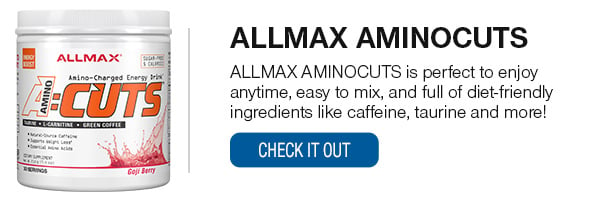01dragonslayer
Ripped
- Jacked Cash
- 537,260
The problem with linear periodization is that it assumes you'll have the same training energy for every workout. Try nonlinear periodization for daily gains!
In this day and age, there are thousands of different exercise programs you can look up on the internet and follow.
Some are from well-trusted fitness gurus, former bodybuilding champions, and anything and everything in between.
What I have noticed, however, is that a lot of extended plans people follow or create for themselves follow a very dull outline.
What I mean by that is that plans typically follow a concept known as “Linear Periodization”.
Let’s break down that term and explain what it means.
A strength & conditioning coach who works with the same athletes all year must develop a systematic variation in training specificity, intensity, and volume in relation to where an athlete is in their athletic year.
These variations of training specificity, intensity, and volume are split up into periods, hence the name “Periodization”.
These periods can range from 1-3 weeks (Microcycle), 2-4 Months (Mesocycle), and the entire training year (Macrocycle).
Related: Daily Undulating Periodization (DUP) Muscle Growth Workout
If you’ve taken any math class (Worst Enemy!), you will know what “Linear” means. This means that throughout an entire macrocycle, the training specificity, intensity, and volume will increase and decrease at a linear rate, with little variation or daily adaptation.
Linear periodization works for strength and conditioning coaches. This is because they typically deal with enormous groups of athletes or teams at a time, and it would be too much effort to provide daily variance for each exercise.
Say for example, you are on a plan that has you:
The next phase in the program dials it down to a hypertrophy base, where you lower the weight and increase the reps by a little bit for another 6 weeks. Now you’ve gained muscle mass, but you’ve lost some of that power on the big lifts because you haven’t been training for it.
Next up is what some fitness UNprofessionals like to call a “Toning” phase. Guess what that means? If you guessed mindlessly performing unnecessarily high amounts of reps with very low amount of weight, in hopes to get a more “toned” look, you would be correct.

You follow this for 6 weeks and develop an insane amount of muscular endurance, to the point where you could compete in a triathlon. Uh oh, now you’ve lost some of that muscle in the hypertrophy stage you just got out of, and you’re a very long ways away from the power phase you completed 12 weeks ago.
Can you see the endless monotony in this?
The power of paper can sometimes set the bar too high. It’s easy to write that you will squat 4x5 85% each Monday for 6 weeks, but it’s impractical to think that you will feel the same for each different session. Maybe you strained your back helping a buddy move his/her couch on Sunday, and you can’t handle a heavy load on back squat..
But your program requires 4x5 85% 1RM!
See the incongruity in this? Athletes require carefully developed cycles in their training regimen due to the fact that they compete in physical competition for months at a time. A regular fitness buff that doesn’t compete in any competition probably won’t require such concrete and scheduled cycles.
For example:
Monday: Squat 4x12 (75% 1RM)
Wednesday: Bench 4x5 (85-90% 1RM)
Friday: Deadlift 8x2 (95+% 1RM)
As you can see, training intensity and volume vary through each day. This works for a couple reasons:
1. Constant neural stimulation: The body is always trying to regulate it’s self to homeostasis, which is why a plateau often happens in linear periodization programs. By constantly varying specificity, intensity, and volume, you are shocking the body in different ways, thus buffering its ability to adapt to the external stimulus.
2. Breaking up the monotony of exercise programs: Staying at the same weight and rep scheme over an extended period of time can make a workout incredibly boring, leaving it less effective.
3. Keep workouts intense: With variations in rep schemes and intensity, you can keep fresh each day with something different to look forward to, as opposed to a linear program, where you will be hitting generally the same rep schemes and intensity each week.
The key idea here is to have some sort of goal in mind, maybe you want to increase numbers on all of your lifts and maintain constant muscle growth. You would adjust a program appropriately that allows you to hit power rep schemes on certain days, and hit hypertrophy rep ranges on certain days.

Playing it safe with linear periodization allows for ease of mind when dealing with injury possibility, as it allows the body to gradually adapt to external stimulus over time.
Related: Warming Up For Dummies - A Lifter’s Guide to Injury Prevention
Nonlinear periodization may or may not increase injury risk due to the fact that varying training volumes and intensities each day may provide less time for an individual to adapt to the external stimulus.
It’s important to listen to your body. Although you might have a certain rep scheme and intensity planned for that day, sometimes your body will reject it. It’s human nature.
Nonlinear periodization gives you the freedom to always adjust to your body. Couldn’t hit your scheduled 4x5 that day? No worries bring the rep range up to 4x12 and aim for it the next time.
This will be the biggest preventer of injury in any training program. Your body will tell you when it’s time for a 1RM, or when it’s time to dial it back a bit. Constantly varying your training specificity, volume, and intensity, will allow you to gain a serious edge toward reaching whatever your goal might be.
Remember; Train SMARTER, not HARDER!
In this day and age, there are thousands of different exercise programs you can look up on the internet and follow.
Some are from well-trusted fitness gurus, former bodybuilding champions, and anything and everything in between.
What I have noticed, however, is that a lot of extended plans people follow or create for themselves follow a very dull outline.
What I mean by that is that plans typically follow a concept known as “Linear Periodization”.
Let’s break down that term and explain what it means.
What is Periodization?
Periodization is a concept that is the backbone in every single training regimen for an athlete.A strength & conditioning coach who works with the same athletes all year must develop a systematic variation in training specificity, intensity, and volume in relation to where an athlete is in their athletic year.
These variations of training specificity, intensity, and volume are split up into periods, hence the name “Periodization”.
These periods can range from 1-3 weeks (Microcycle), 2-4 Months (Mesocycle), and the entire training year (Macrocycle).
Related: Daily Undulating Periodization (DUP) Muscle Growth Workout
If you’ve taken any math class (Worst Enemy!), you will know what “Linear” means. This means that throughout an entire macrocycle, the training specificity, intensity, and volume will increase and decrease at a linear rate, with little variation or daily adaptation.
Linear periodization works for strength and conditioning coaches. This is because they typically deal with enormous groups of athletes or teams at a time, and it would be too much effort to provide daily variance for each exercise.
Linear Periodization (for the normal person!)
Now, let’s take the concept of linear periodization, and try to apply it to an individual who isn’t an athlete competing in a sport’s training regimen.Say for example, you are on a plan that has you:
- Squatting 4x5 85% 1RM every Monday (Who am I kidding, nobody squats on Mondays!)
- Benching 4x5 85% 1RM every Wednesday
- Deadlifting 4x5 85% 1RM every Friday
The next phase in the program dials it down to a hypertrophy base, where you lower the weight and increase the reps by a little bit for another 6 weeks. Now you’ve gained muscle mass, but you’ve lost some of that power on the big lifts because you haven’t been training for it.
Next up is what some fitness UNprofessionals like to call a “Toning” phase. Guess what that means? If you guessed mindlessly performing unnecessarily high amounts of reps with very low amount of weight, in hopes to get a more “toned” look, you would be correct.

You follow this for 6 weeks and develop an insane amount of muscular endurance, to the point where you could compete in a triathlon. Uh oh, now you’ve lost some of that muscle in the hypertrophy stage you just got out of, and you’re a very long ways away from the power phase you completed 12 weeks ago.
Can you see the endless monotony in this?
The Problem
Linear periodization looks great on paper. However, your body will not always respond to your expectations. How often have you gone to the gym, and just felt horrible? Each of your lifts were subpar. You dragged through the mud for 45 minutes and left. Linear periodization can set an individual up for disappointment.The power of paper can sometimes set the bar too high. It’s easy to write that you will squat 4x5 85% each Monday for 6 weeks, but it’s impractical to think that you will feel the same for each different session. Maybe you strained your back helping a buddy move his/her couch on Sunday, and you can’t handle a heavy load on back squat..
But your program requires 4x5 85% 1RM!
See the incongruity in this? Athletes require carefully developed cycles in their training regimen due to the fact that they compete in physical competition for months at a time. A regular fitness buff that doesn’t compete in any competition probably won’t require such concrete and scheduled cycles.
Nonlinear Periodization
You can probably guess what this means. This is a concept that I follow weekly, and a lot of coaches and athletes follow. This is a program concept that varies training specificity, intensity, and volume in each microcycle.For example:
Monday: Squat 4x12 (75% 1RM)
Wednesday: Bench 4x5 (85-90% 1RM)
Friday: Deadlift 8x2 (95+% 1RM)
As you can see, training intensity and volume vary through each day. This works for a couple reasons:
1. Constant neural stimulation: The body is always trying to regulate it’s self to homeostasis, which is why a plateau often happens in linear periodization programs. By constantly varying specificity, intensity, and volume, you are shocking the body in different ways, thus buffering its ability to adapt to the external stimulus.
2. Breaking up the monotony of exercise programs: Staying at the same weight and rep scheme over an extended period of time can make a workout incredibly boring, leaving it less effective.
3. Keep workouts intense: With variations in rep schemes and intensity, you can keep fresh each day with something different to look forward to, as opposed to a linear program, where you will be hitting generally the same rep schemes and intensity each week.
The key idea here is to have some sort of goal in mind, maybe you want to increase numbers on all of your lifts and maintain constant muscle growth. You would adjust a program appropriately that allows you to hit power rep schemes on certain days, and hit hypertrophy rep ranges on certain days.

Drawback
I would by blatantly lying to you if I were to say there are no drawbacks to the concept of Nonlinear Periodization.One of the biggest worries research scientists and strength coaches have expressed over this concept is the increased injury possibility.Playing it safe with linear periodization allows for ease of mind when dealing with injury possibility, as it allows the body to gradually adapt to external stimulus over time.
Related: Warming Up For Dummies - A Lifter’s Guide to Injury Prevention
Nonlinear periodization may or may not increase injury risk due to the fact that varying training volumes and intensities each day may provide less time for an individual to adapt to the external stimulus.
Listen to Your Body
The underlying message that I want to get through in this post is simple- listen to your body. Whether you are in a linear or a nonlinear periodization program, your body will always feel different on certain days.It’s important to listen to your body. Although you might have a certain rep scheme and intensity planned for that day, sometimes your body will reject it. It’s human nature.
Nonlinear periodization gives you the freedom to always adjust to your body. Couldn’t hit your scheduled 4x5 that day? No worries bring the rep range up to 4x12 and aim for it the next time.
This will be the biggest preventer of injury in any training program. Your body will tell you when it’s time for a 1RM, or when it’s time to dial it back a bit. Constantly varying your training specificity, volume, and intensity, will allow you to gain a serious edge toward reaching whatever your goal might be.
Remember; Train SMARTER, not HARDER!
Sample Nonlinear Periodization Week Program
day 1
| Exercise | Sets | Reps |
|---|---|---|
| 1. Back Squat | 4 | 6, 6, 3, 3 |
| 2a. Squat Jumps | 4 | 10 |
| 2b. Side Lunge | 4 | 8 |
| 3. Leg Press | 4 | 8, 8, 6, 6 |
day 2
| Exercise | Sets | Reps |
|---|---|---|
| 1. Bench Press | 4 | 12, 10, 10, 8 |
| 2a. Dumbbell Fly | 4 | 10 |
| 2b. Pushup | 4 | failure |
| 3a. Machine Press | 3 | 12 |
| 3b. Cable Cross | 3 | 10 |
day 3
| Exercise | Sets | Reps |
|---|---|---|
| 1. Deadlift | 4 | 6, 4, 2, 2 |
| 2a. Machine Row | 4 | 5 |
| 2b. Rear Delt Fly | 4 | 15 |
| 3a. Dumbbell Row | 4 | 6 |
| 3b. Pullup | 4 | failure |







